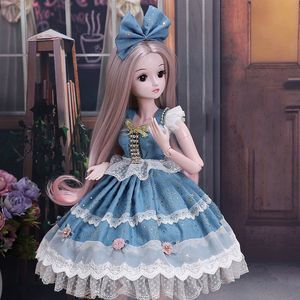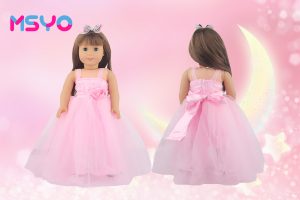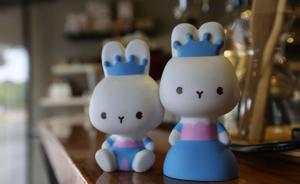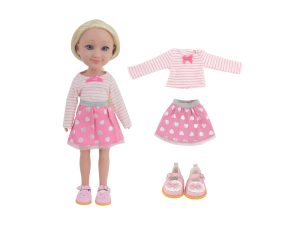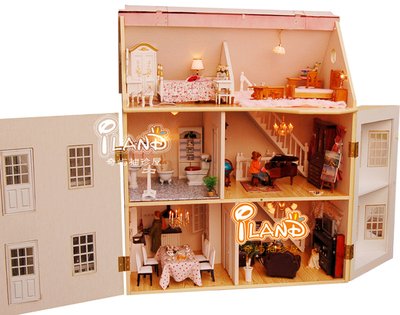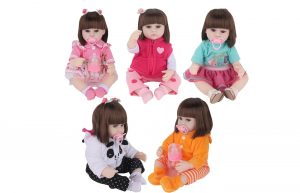Dolls have been an integral part of human culture for centuries, captivating the hearts and minds of people across the globe. These miniature humanoid figures have evolved from simple playthings to objects of art, cultural artifacts, and even therapeutic tools. In this extensive exploration, we will delve into the multifaceted world of dolls, examining their history, manufacturing processes, different types, and the profound impact they have had on society and individuals.
A Brief History of Dolls
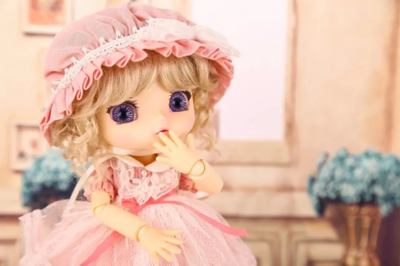 The origin of dolls can be traced back to ancient civilizations. Archaeological findings suggest that dolls were present in Egypt as early as 2000 BC. These early dolls were often made of materials such as wood, clay, or ivory and were used in religious ceremonies and as toys for children. In ancient Greece and Rome, dolls were also popular, with some being crafted to represent deities or mythological figures.
The origin of dolls can be traced back to ancient civilizations. Archaeological findings suggest that dolls were present in Egypt as early as 2000 BC. These early dolls were often made of materials such as wood, clay, or ivory and were used in religious ceremonies and as toys for children. In ancient Greece and Rome, dolls were also popular, with some being crafted to represent deities or mythological figures.
During the Middle Ages, dolls continued to be handmade, and they were often dressed in elaborate costumes. These dolls were sometimes used in educational settings to teach young girls about homemaking skills. The Renaissance period saw a flourishing of doll-making as an art form, with dolls becoming more detailed and realistic, often made by skilled artisans.
In the 19th century, with the advent of industrialization, dolls began to be mass-produced. This led to a wider availability and affordability of dolls, making them accessible to a larger segment of the population. Companies like the German firm Kammer and Reinhardt and the American doll manufacturer Madame Alexander became renowned for their high-quality dolls, which were not only playthings but also collectibles.
Materials and Manufacturing
 Dolls can be made from a wide variety of materials, each lending its unique characteristics to the final product.
Dolls can be made from a wide variety of materials, each lending its unique characteristics to the final product.
1. Porcelain: Porcelain dolls are highly prized for their delicate and lifelike appearance. The manufacturing process involves creating a mold, pouring in liquid porcelain, and then firing it at high temperatures to achieve a hard, smooth finish. Artists then painstakingly paint the facial features and details, often using fine brushes and pigments to create a realistic expression. These dolls are often dressed in elaborate costumes made of silk, lace, and other fine fabrics.
2. Plastic: With the rise of modern manufacturing techniques, plastic has become a popular material for dolls. It is durable, lightweight, and can be molded into various shapes and sizes. Injection molding is a common method used to produce plastic dolls, allowing for mass production with consistent quality. The plastic can be colored during the manufacturing process, eliminating the need for extensive painting. However, some high-end plastic dolls still receive detailed paintwork to enhance their features.
3. Cloth: Cloth dolls have a warm and huggable quality. They are typically made by sewing fabric together to form the body, limbs, and head. The fabric can be cotton, felt, or a combination of materials. Stuffing, such as polyester fiberfill, is used to give the doll its shape. Cloth dolls often have embroidered or painted facial features and are dressed in simple, yet charming, outfits. They are popular for their softness and are often used as comfort dolls for children.
4. Wood: Wooden dolls have a rustic and traditional charm. Carvers use various types of wood, such as maple, birch, or pine, to shape the doll’s body and limbs. The wood is sanded smooth and then painted or stained to add color and detail. Wooden dolls can range from simple, primitive designs to highly detailed and intricately carved works of art.
Types of Dolls
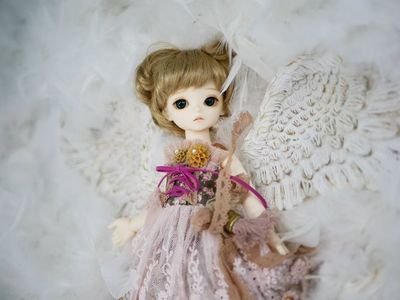 1. Baby Dolls: These dolls are designed to resemble infants and are popular among young children, especially girls. They often come with accessories such as bottles, pacifiers, and baby clothes. Baby dolls can be made from different materials and range in size from small handheld dolls to large, life-sized ones. They are used in pretend play scenarios where children act out nurturing and caregiving roles.
1. Baby Dolls: These dolls are designed to resemble infants and are popular among young children, especially girls. They often come with accessories such as bottles, pacifiers, and baby clothes. Baby dolls can be made from different materials and range in size from small handheld dolls to large, life-sized ones. They are used in pretend play scenarios where children act out nurturing and caregiving roles.
2. Fashion Dolls: Fashion dolls, like the iconic Barbie doll, are known for their stylish clothing and trendy looks. These dolls are often tall and slender, with a focus on haute couture and modern fashion trends. They come with a vast array of outfits and accessories, allowing children and collectors to engage in fashion play and creative styling. Fashion dolls have had a significant impact on the fashion industry, inspiring real-world clothing designs and trends.
3. Collectible Dolls: These dolls are produced in limited quantities and are highly sought after by collectors. They can be made from various materials and often feature intricate details, unique designs, and sometimes collaborations with renowned artists or designers. Collectible dolls may be based on historical figures, fictional characters from movies or books, or original artistic concepts. Their value can increase over time, depending on their rarity and condition.
4. Ethnic and Cultural Dolls: These dolls represent different ethnic groups and cultures around the world. They are dressed in traditional clothing and often feature characteristic facial features and hairstyles. These dolls serve as educational tools, helping children learn about the diversity of the global community and different cultural traditions. They can also be used in cultural celebrations and displays.
5. Action Figures: While not strictly dolls in the traditional sense, action figures are similar in that they are small, poseable figures. These are often based on superheroes, movie characters, or military personnel. Action figures are designed to be highly articulated, allowing for dynamic poses and play scenarios that involve action and adventure.
Dolls have come a long way from their humble beginnings as simple toys. They have become a rich and diverse part of our cultural heritage, representing art, history, and the human spirit. Whether as a child’s beloved playmate, a collector’s prized possession, or a cultural symbol, dolls continue to hold a special place in our hearts and imaginations. Their enduring appeal lies in their ability to spark creativity, tell stories, and connect us to our past and to each other. As we look to the future, dolls will undoubtedly continue to evolve and adapt, but their fundamental essence as objects of wonder and inspiration will remain unchanged.

